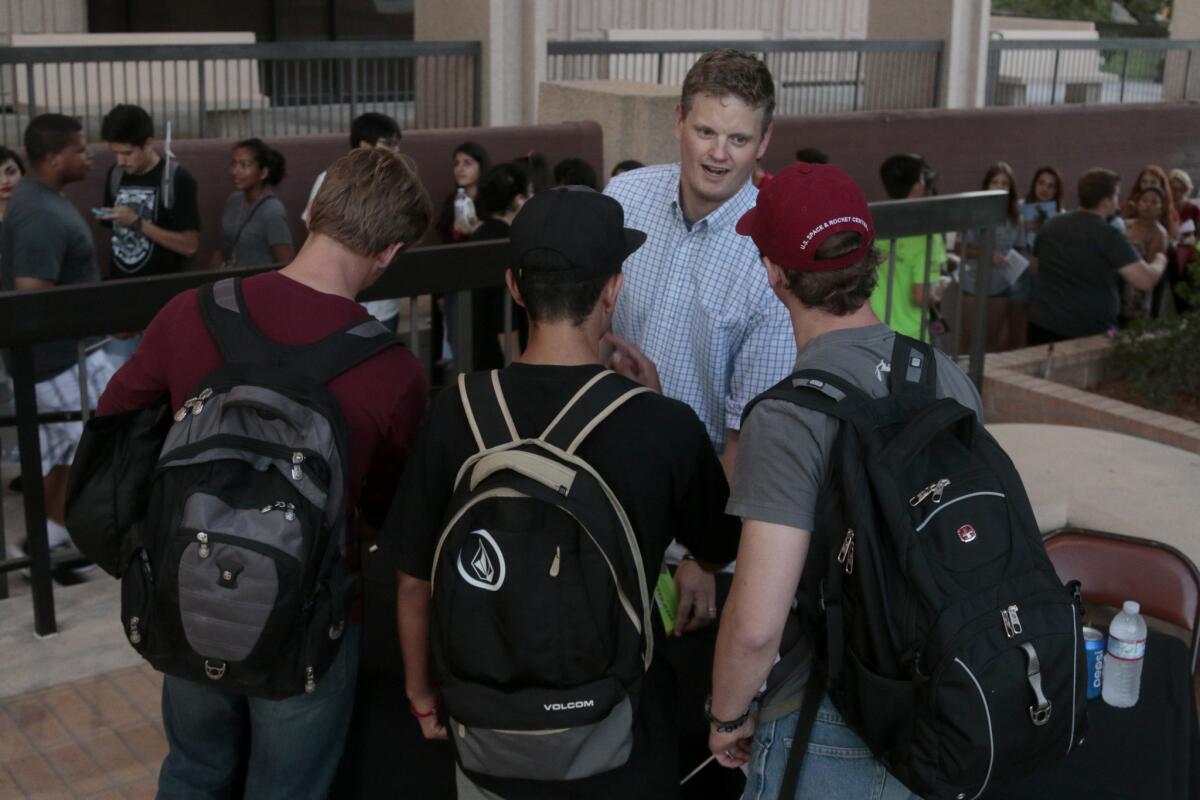Higher Learning: Cal State considers limits on freshmen among other enrollment scenarios

The University of California’s decision to raise tuition generated much controversy.
But the California State system could consider what by some measures is an even more radical plan as it struggles with budget constraints and increasing demand from freshmen and community college transfers. Rather than increasing tuition, Cal State has reduced enrollment targets for this fall. And trustees recently discussed the dark scenario of having to stop accepting freshmen.
Those ideas are designed in part to send Sacramento a loud message that the CSU system needs more funding from state government. But they have added a level of uncertainty and fear for some students seeking to attend the nation’s largest four-year college system.
The application period for Cal State’s 23 campuses opened in October and the system faces the prospect of turning away thousands of eligible students because state funding is not keeping pace with enrollment needs.
Gov. Jerry Brown’s multiyear funding plan calls for an additional $119.5 million each for the Cal State and University of California systems in 2015-16. But that amount is $97.1 million short of what Cal State officials say they need from the state to expand programs and enrollment.
Cal State’s budget request includes $103.2 million to enroll an additional 12,000 students. Brown’s plan, by contrast, would allow an additional 3,500 students.
The UC regents last week approved tuition increases of as much as 5% every year for five years, saying that the extra funding is necessary to pay rising employee salaries and pensions, hire more faculty and increase the number of California undergraduates by 5,000. Tuition increases could be eliminated or reduced depending on state funding.
State Assembly Speaker Toni Atkins (D-San Diego), who along with Brown and other top state officials opposed UC’s move, said she would work hard to boost state funding for UC.
Brown has said he would provide the UC and Cal State systems 4% increases this year and next in exchange for flat tuition. The governor also has called on the UC system to accept more transfer students from two-year colleges and to increase online offerings.
Cal State leaders appear to have taken that seriously but say they can make a case for more funding.
The system is expecting pre-recession numbers of community college transfer students, about 60,000. And there are new demands on enrollment from those who hold two-year degrees that guarantee them entry to Cal State. Last year, nearly 12,000 community college students earned those degrees — double the number from the previous year — and about 7,000 transferred to a Cal State campus.
The degrees were included in a 2010 law that seeks to streamline transfers for two-year students. But one consequence could be that Cal State campuses are swamped with so many transfer students that there’s no room — or funding — for freshmen.
So far, the numbers are too small to merit immediate alarm, officials said. But it’s an ongoing worry.
“There is concern about whether there will be places for future transfer degree holders as the program gains in popularity and we produce more,” said California Community Colleges spokesman Paul Feist. “What it really points out is that we’re increasingly worried about the willingness of the state to fund access to all levels of higher education.”
The other pressure point is the nearly $2 billion in backlogged maintenance needed to preserve aging campuses.
Brown, among others, has suggested that the Cal State system suspend all new enrollment and direct funding to repairs.
That plan, however, probably would also receive strong backlash.
Under the state’s landmark Master Plan for Higher Education, adopted in 1960, Cal State is supposed to guarantee access to the top one-third of high school graduates. Any retrenchment of freshmen or overall enrollment would further erode that promise, said Steve D. Boilard, executive director of the Center for California Studies at Cal State Sacramento.
“It’s not simply that there are more students than there are available slots; it’s also that some students are taking more units than they need to graduate,” Boilard said. “On the other end of the equation, there are many students who spend a few years at CSU but never manage to get a degree. I think that those two issues need to be addressed before we make larger, systemic changes such as cutting off freshman admissions.”
At the Cal State trustees meeting this month, Chancellor Timothy P. White offered one early proposal to charge higher tuition — similar to what out-of-state students pay — to those with excessive credits as an incentive to graduate sooner.
And, a dozen campuses have imposed so-called student success fees of up to nearly $800 per student — which many critics see, in effect, as tuition hikes — to augment academic services and hire faculty.
Still, the enrollment limits could be another major point of contention. The governor’s budget proposal is expected in January with a revision and legislative action expected in the spring.
Twitter: @carlariveralat
More to Read
Start your day right
Sign up for Essential California for news, features and recommendations from the L.A. Times and beyond in your inbox six days a week.
You may occasionally receive promotional content from the Los Angeles Times.







